Another Helping
19 Oct.—20 Nov. 17
Solo exhibition at SMITH, Cape Town.

Waste Management, linocut on paper, monotype on paper, glue, 76 x 56 x 6cm
Tear unsold linocut and monotype prints from archive into strips, including misprints, trial proofs, and unloved works.Make a frame to house the strips after assembled
Glue strips together in a stack
When it becomes evident that more prints are needed, tear up further works, including valuable editioned prints and artist’s proofs
Assemble

Non-committal, linocut on paper, 104 x 64cm
Carve linocut block
While printing, begin relieving pressure on the printing press
Continue printing and relieving pressure until finished
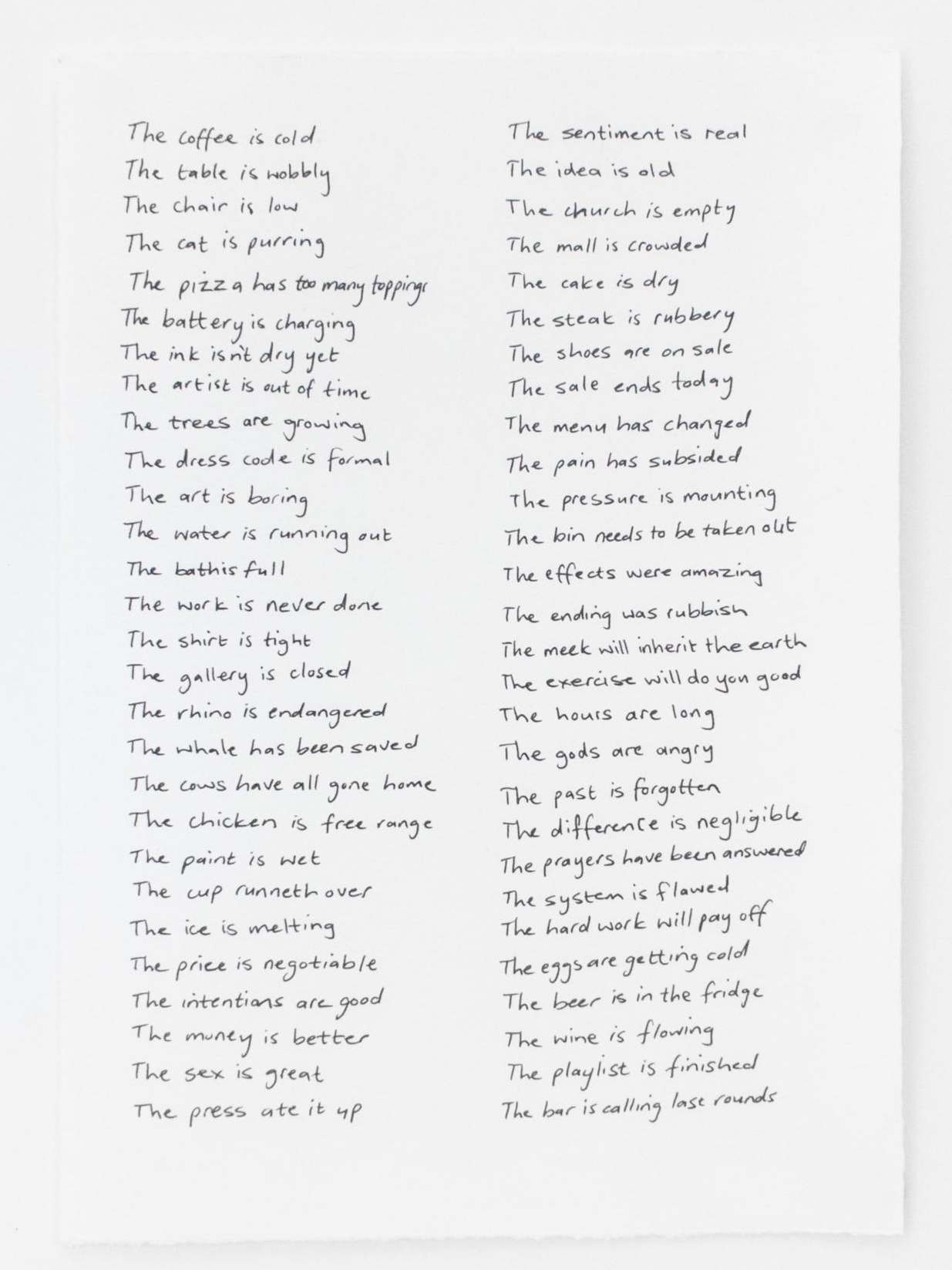
Safe Assumptions, part I, ink on paper, 30 x 21cm

Safe Assumptions, part II, ink on paper, 30 x 21cm

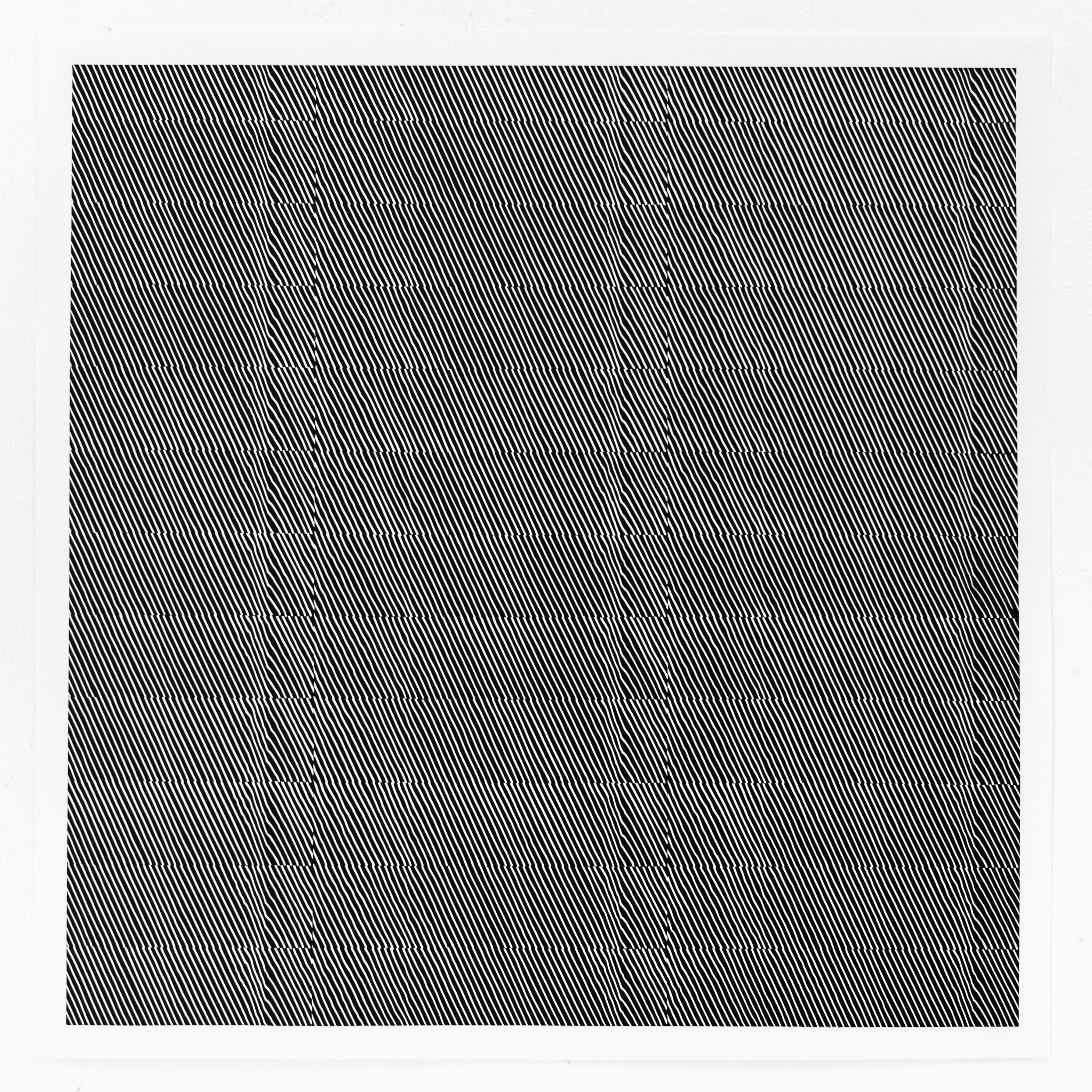
Six of One and Half-a-dozen of the Other, linocut on paper, each 75 x 75cm
Two linocuts of identical design, identifiable only by the irregularities in each carving.
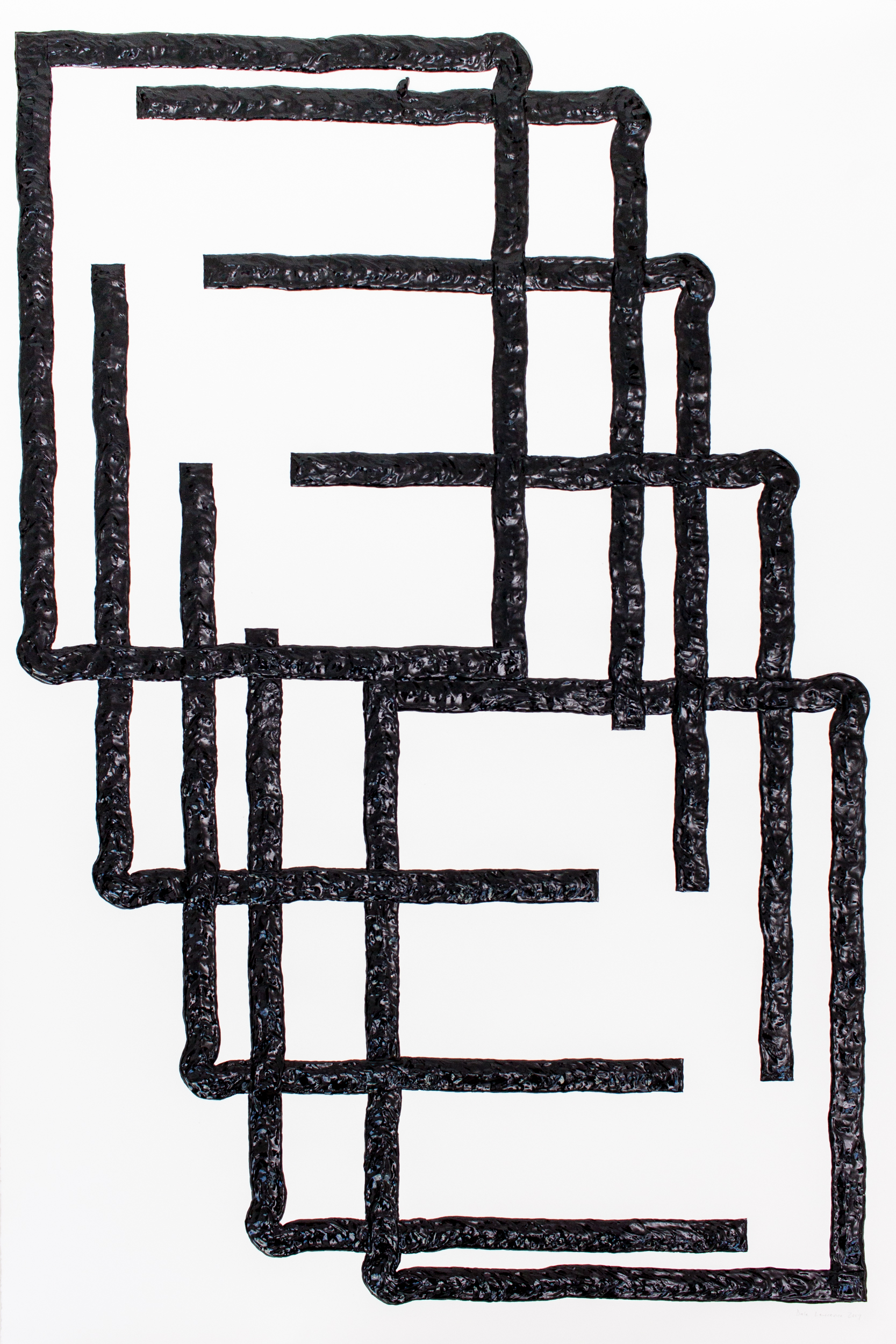
Acquisition, acrylic on paper, 120 x 80cm





From top left: After Ghirlandaio, upon a Flash of Inspiration; After Bellini, after a Breakthrough; After Dürer, upon Seeing the Light; After the Master of San Miniato, on Self-Actualisation; After Raphael, after Finding His Way; oil on canvas, each 60 x 40cm


Keeping the Faith, paper, frame, overhead projector, acetate, dimensions variable

After Rothko, after teaching them a lesson, oil on canvas, 150 x 100cm
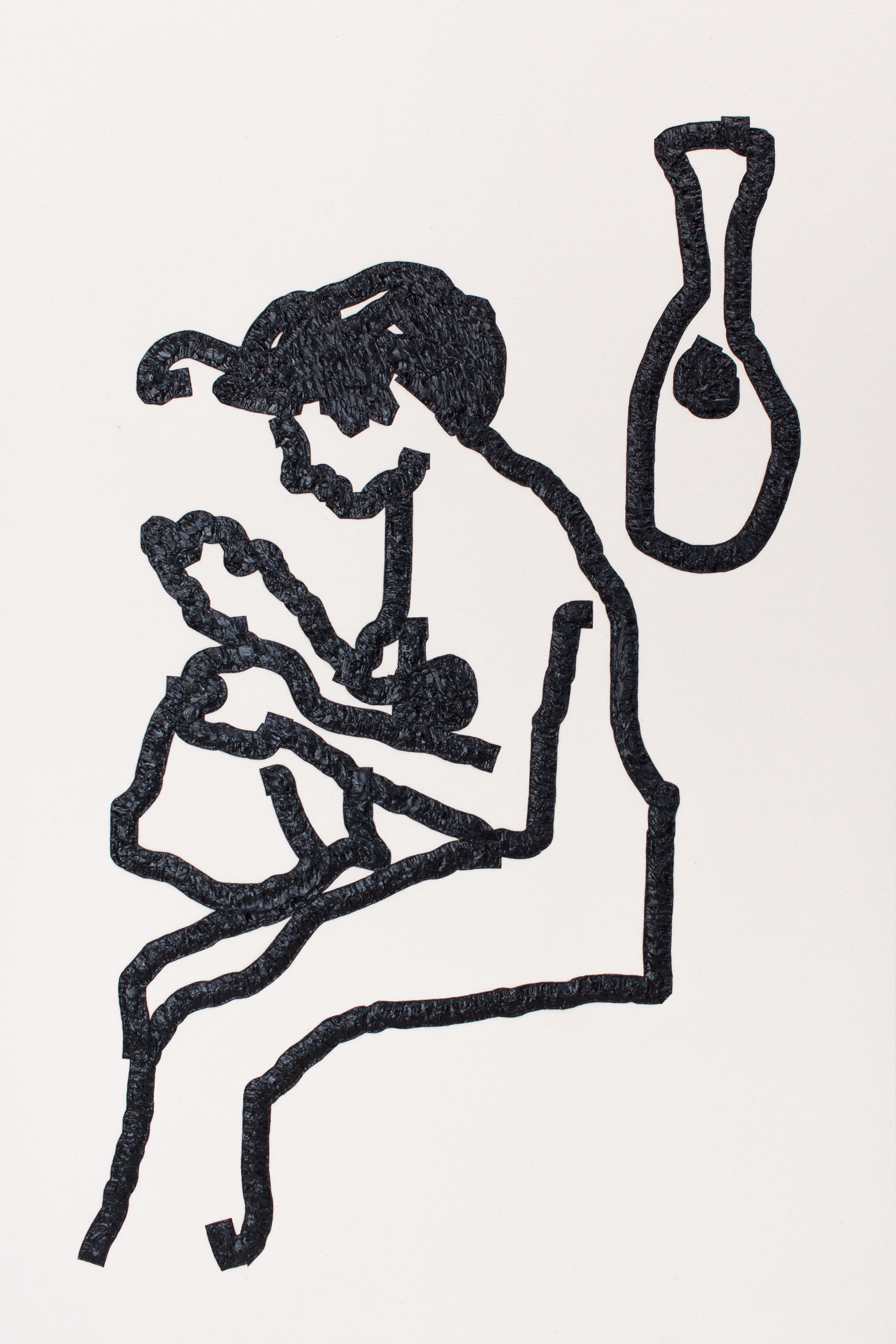
After Gauguin, after closing on a high, oil on canvas, 150 x 100cm
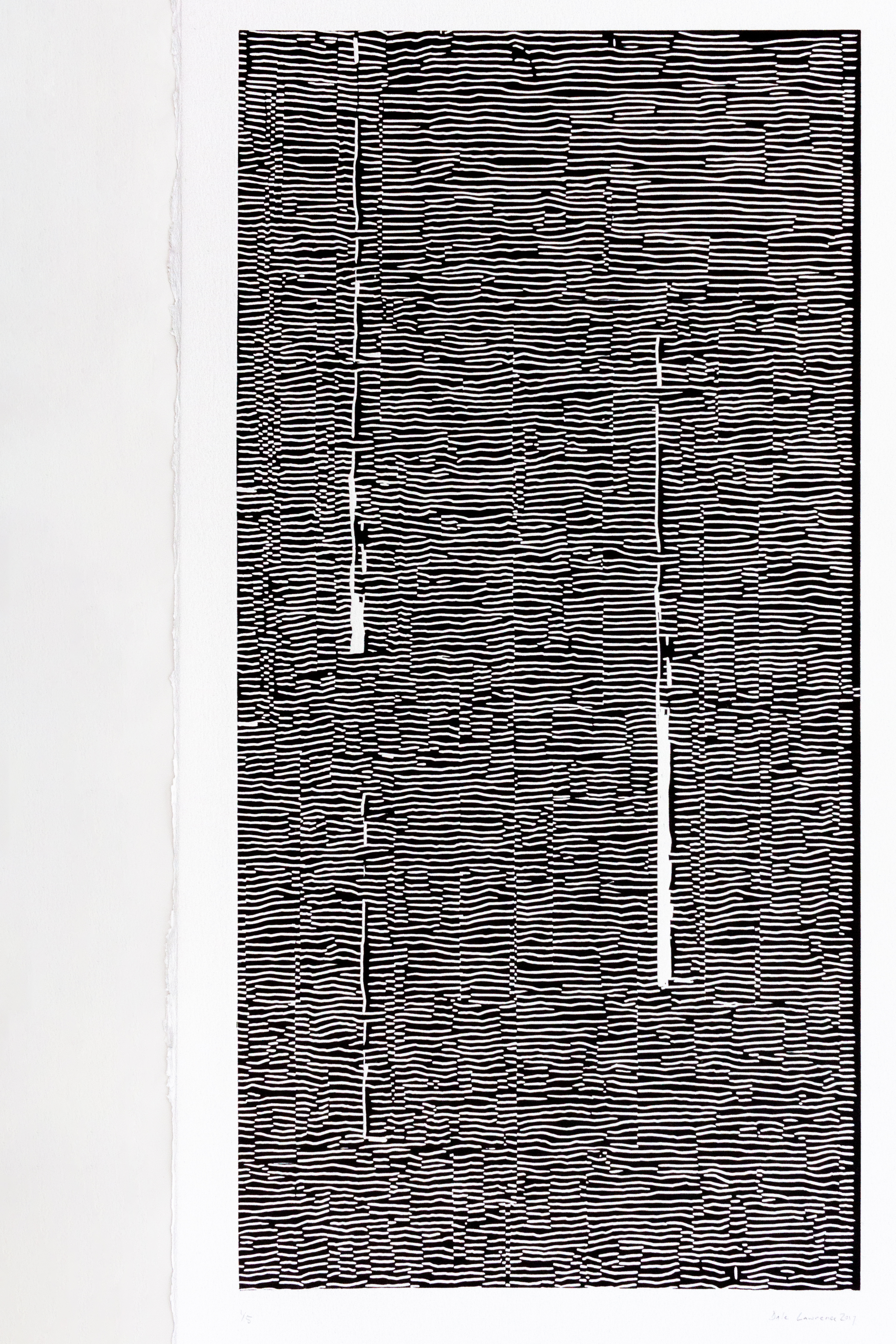
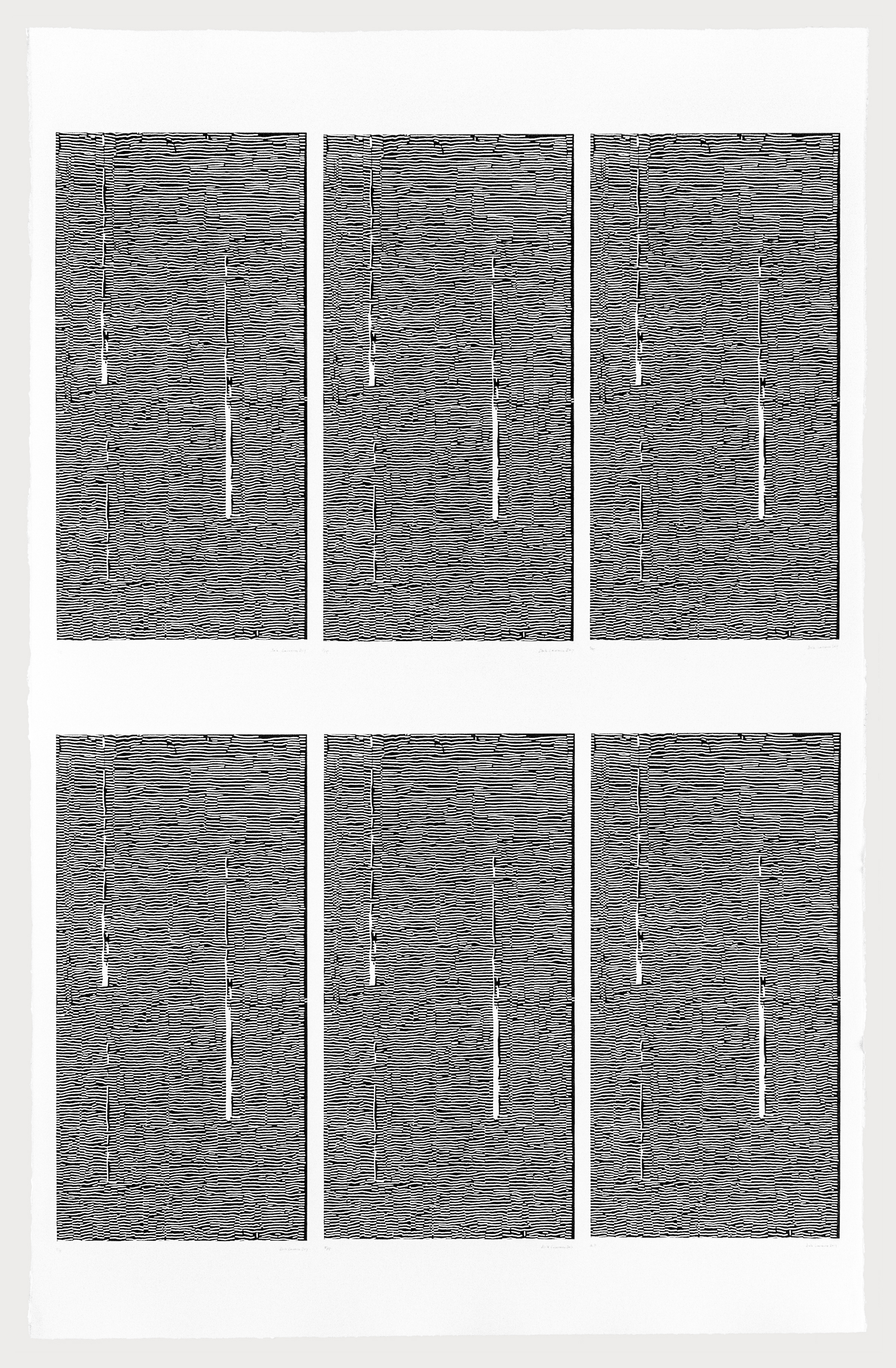
Edition of 5 Plus Artist’s Proof, linocut on paper, 192 x 124cm, unique.
Display as a unique artwork.
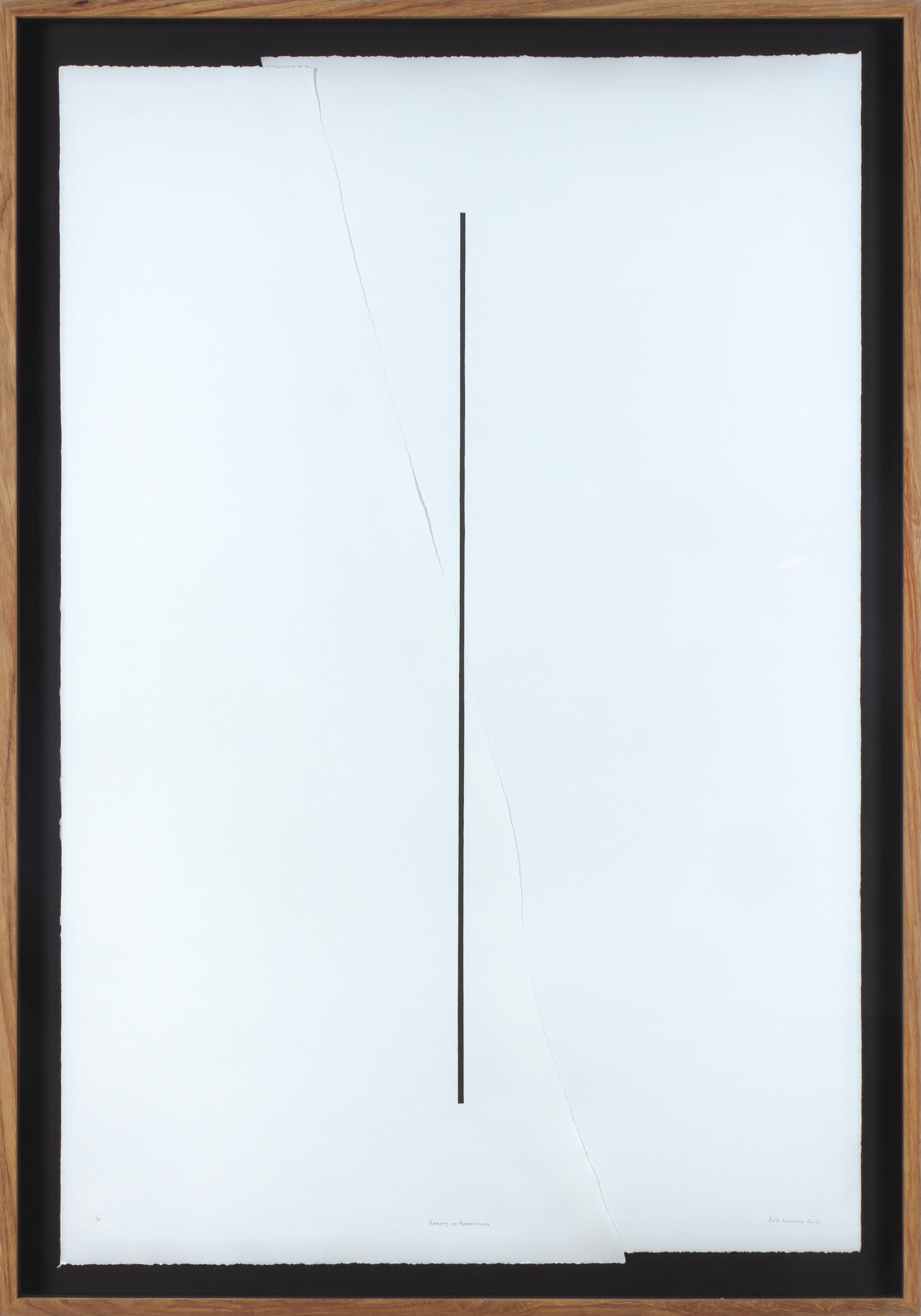
Keeping Up Appearances, Linocut on paper, approx. 108 x 72cm
Tear sheet of paper in two
Place sheets together in relief printing press
Print a single line (linocut) over both pieces

Garnish for the Salad, monotype on paper, 100 x 50cm

Another Helping, linocut on paper, 120 x 80cm, edition variable
Tear up the linocut block of ‘Ironing T-shirts’ (2016)
Rearrange the fragments and print again
Give the prints a new title and present as a new artwork

Hand-me-downs, linocut on paper, 120 x 80cm, edition variable
Tear up the linocut block of ‘Time Consumer’ (2016)
Rearrange the fragments and print again
Give the prints a new title and present as a new artwork
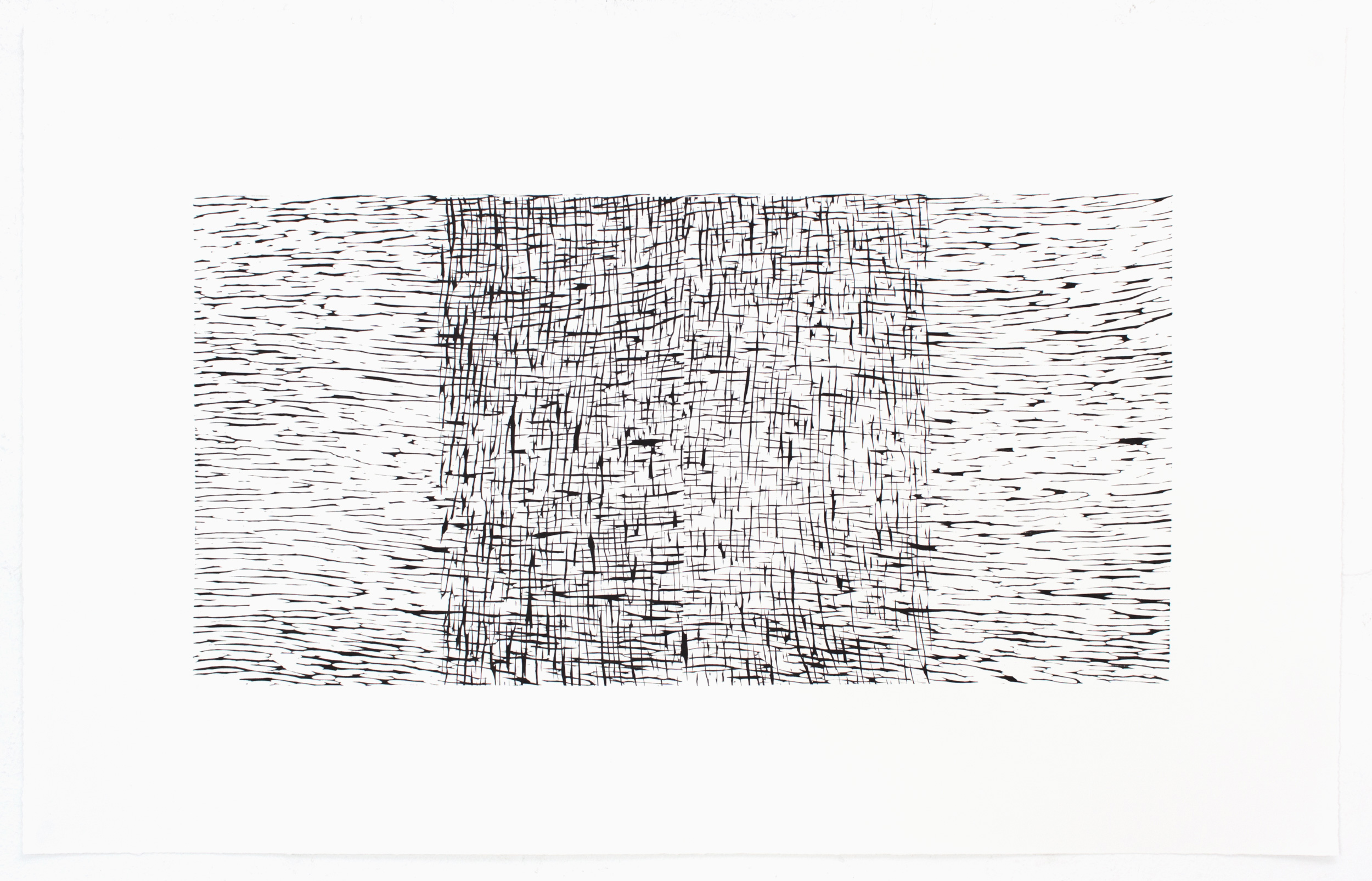
Could You Please Repeat That?, Linocut on paper, 107 x 68cm
Tear up the linocut block of ‘Look Busy II’ (2016)
Rearrange the fragments and print again
Give the prints a new title and present as a new artwork
Another Helping, Dale Lawrence in conversation with Matthew Freemantle
MF: In the show’s title and elsewhere in the collection you appear to be playing with the metaphor of art as food. What’s your thinking here?
DL: A notable similarity between art and food is their ability to communicate something. I’m looking at the consumption of objects versus the consumption of messages. Food satisfies a practical need but is also arguably far better at communicating as a cultural and social tool than art.
Isn’t it that everyone knows how to eat? The effect of eating is easily available. Perhaps we are less sure how to consume art and, as a result, we are less sure how to digest or process it. Consuming food is considered a lower form of consumption: easier, more perfunctory. Perhaps we should be better educated in how to consume art?
We should learn from food. The rules with preparing food, for instance, are simpler: make it appealing, make it with a certain attitude and, perhaps, imbue it with a message. Once given over for consumption the effect is not necessarily even spoken about - it’s unsaid because it’s understood. There’s nothing to talk about. Maybe that’s why people talk about art so much, because it isn’t understood on that same level. Someone could walk through the show and see a bunch of prints - some torn, some neat - but how does the work simply and fundamentally engage that person in the same way food can?
That said, I’ve also seen people eat food made with love, attention, respect and technique as if they are chewing cud.
It is possible to mirror society without society knowing they are being shown themselves. Whether or not a message is consumed does depend on whether a person is receptive or not. An appetite is required.
There’s an obligation on a chef to make food delicious, because that’s how we get the body interested in consuming it. The message that chef is trying to communicate is, in some cases, more interesting than that. Often it is only as interesting as it is sensory, but sometimes there’s more. A monk might make a very simple meal using quite banal flavours and conjure a transcendent experience. And then, the most tasty or flavourful thing you’ve ever eaten could be the worst thing you’ve ever consumed. If an artful chef is attempting to transmit an attitude of, say, generosity and the value of service or giving with his food, then what would you say that you’re trying to convey?
There’s an essay by John Ruskin on Gothic architecture and how he thought it was so much better than Roman or Greek or classic architecture. With classic architecture, because the majority of carvers were slaves, they didn’t get any joy out of what they did and they didn’t necessarily put any joy into it. As a result there’s no joy to be had for you as a viewer; indeed there’s no joy for anyone. There are far more mistakes in the Gothic work and its far less perfect but there is also far more variation within these forms, which makes it more interesting to look at in the long run. There was evident enjoyment by the various makers; they arguably got something out of what they were doing and had agency over it. And that sings from the result. If I was to look at why I’ve addressed some of the themes I’ve addressed in this body of work they were all attempts at creating a better result with less perfection. Allowing an element of chance and an element of happening; trying to bring that into the realm of perfect objects.
By titling the show ‘Another Helping’ you imply that this collection is more of the same. Is this your intention?
I was given a piece of advice by someone whose opinion I don’t necessarily respect. He told me that the problem with artists these days is that they don’t stick with something for long enough. They move on too soon and don’t give people enough time to get on board or buyers enough time to stock up. It struck me that with the apparent success of the last show there was an expectation that the follow up would have to deliver the same consistency or quality or the same something. I was playing off the two driving contradictory mechanisms within the art industry - the fact that on one hand you’re supposed to do new things because new things communicate new ideas which is the point of contemporary art but on the other hand you’re supposed to do more of the same because it needs to be sustainable economically. If what we want from artists is novelty, then that will be presented whether there’s something to genuinely new add or not. An artist is also a business and to set your business up as being able to come up with something new every day is crazy. Generally a good business is one thing produced over and over again. I was interested in that contradiction and that’s why I wanted to present the works as another delivery of a brief, another serving.
You used the term ‘waste management’ in your notes and allude to the idea of unsold art being wasted art. Is this a view you hold?
An interesting question. I think the life of an artwork is important. For me the most important aspect of the works as a collection is how they speak to each other in the context of an exhibition. They take on an unknown life after that and it’s difficult to know how they’re read or what they say. I wouldn’t say unsold works are a waste but it does bring opportunities. Another work in the show, called ‘Waste Management’ is a stack of torn pages including some old prints laced into it, trial proofs I didn’t like quite so much or others I didn’t feel too bothered tearing up. Unsold works stay in my collection, so I have a much longer connection to these so called “failed” pieces. Works that aren’t sold are viewed as less important somehow yet they are the ones that stick around and have more of an impression on me in the long run. They are the ones that, now, end up recycled into new works and in a roundabout way end up being exhibited twice.
Art is widely seen as the preserve of a certain kind of consumer. It might be argued that with this show you’re trying to do away with those limitations - to make the work more consumable.
Sure. I think that would be an amazing result. I would be very pleased were that to happen.
These days people often equate accessibility or ease of consumption with affordability and this is another problem art has that food generally doesn’t.
Yes, but it is worth asking whether one has to purchase art in order to consume it. This idea was a fortunate result of efforts by art dealers. For the duration of the show the gallery, after all, is free to walk into. Anyone who has the desire can see the work. Unfortunately, the expectation is that if you’re not a frequenter of galleries many people feel that they aren’t allowed. As in: if you’re not a potential buyer then get out.
Isn’t it great to play with the idea that buying art is missing the point - that the joke is on you if you feel like you’ve consumed it by buying it?
Buying art might be swallowing it or making it invisible, but it’s not necessarily consuming it.
With food you have to do certain basic things to it to elevate flavours. You season food. You’re playing with a palate and taste buds; these are known receptors that engage with certain things and don’t engage with others, so the game is set up. With art, it is much more difficult to understand what the receptors are or what the game is. What are you aiming to stimulate?
What might be helpful to understand is that the substance being transported by a meal or an artwork is of lasting significance and not the thing itself. The artwork is a vessel in these cases for effort, labour, skill and insight but also for spontaneity, accident or originality - these are the things that we are attracted to looking at an artwork. There are other things you’d want to absorb, and wanting to buy an artwork to look at repeatedly for the next few years is to try and digest how the aforementioned things came about. The subconscious desire to have that filter through your life places a lot of responsibility on the creator of artworks because - in the same way as the creator of a sandwich - you wield influence. If, for example, you managed to convince people that crickets tasted delicious the repercussions of that realisation would be far-reaching.
For crickets especially.
Absolutely.
All works ©2017 Dale Lawrence. All rights reserved